|
|
Post by kemp on Sept 25, 2018 9:02:55 GMT -5
I myself prefer this account by Herodotus on the death of Cyrus. If anything, the above makes for an epic tale, full of intrigue, action, revenge and drama. Much better than Xenophon's where he claimed that Cyrus died peaceably at his capital, although I am sure Cyrus would probably favour a less violent end to his life. hmmm... This guy told me the Warriors shot Cyrus.
That guy was wrong cause he was the one that shot Cyrus. His response when I asked him why he did it. 'No reason, I just like doing things like that'.  |
|
Deleted
Deleted Member
Posts: 0
|
Post by Deleted on Oct 8, 2018 12:17:37 GMT -5
Broad Genetic Variation on the Pontic-Caspian SteppeOctober 4, 2018, Stockholm University Summary:
The genetic variation within the Scythian nomad group is so broad that it must be explained with the group assimilating people it came in contact with. This is shown in a new study on Bronze and Iron Age genetics of the Pontic-Caspian Steppe, situated in the Black Sea region. This is an excavation of a Kazburun burial ground in Southern Urals (Credit: Iia Shuteleva and Nikolai Shcherbakov). The genetic variation within the Scythian nomad group is so broad that it must be explained with the group assimilating people it came in contact with. This is shown in a new study on Bronze and Iron Age genetics of the Pontic-Caspian Steppe, situated in the Black Sea region. The article is published in the scientific journal Science Advances.
"There is so much genetic variation among the Scythians, it seems that you didn't have to be born a Scyth to be a part of their community," says Anders Götherström, Professor at the Department of Archaeology and Classical Studies, Stockholm University.
This is likely the strategy needed for the group to have been able to grow as fast, expand as vast and to remain established for as long as they did. The findings emphasize the importance of assimilation to maintain Scythian dominance around the Black Sea region.
"It also sheds light on their attitude towards conquered people. Scythians are often thought of as an extremely aggressive group, but their gradual genetic expansion show us that they were also a group prepared to interact with and take in new people. For example, in one burial ground we found individuals of different genetic background buried according to Scythian tradition. This tells us that Scythians seem to have incorporated people from other groups into their families and their community," says Maja Krzewińska, researcher at the Department of Archaeology and Classical Studies, Stockholm University.
The Pontic-Caspian Steppe -- a dynamic place
The vast area of the Pontic-Caspian Steppe region has worked as a motor for demographic events throughout Eurasia, especially in the western part of the meta-continent. Crucial events in European history and prehistory can be traced back to people of the Steppe. Including the invention of horseback riding, chariots, a new type of warfare and the spread of Indo-European languages.
"The Central Eurasian Steppe seems to have been a very dynamic place. An important geographical region which acted both as a melting-pot and a nursery of people, as well as communicative and technological innovations. This is where people met, shared ideas and genes. From this 'pit-stop' genes and ideas were spread from the East to the West," says Gülşah Merve Kılınç, researcher at the Department of Archaeology and Classical Studies, Stockholm University.
A gradual genetic mix
An international research team, led from Stockholm University, have investigated genomic data from 35 individuals, spanning 2,200 years. The material mainly consists of human remains from the southern Urals and central Eurasian Steppe. The researchers have analyzed DNA from four different nomadic groups; Cimmerians, Scythians, Sarmatians and Bronze Age Srubanya individuals.
Even though a couple of the groups had an early history somewhere else all the groups share genetic background and follow each other chronologically. The Cimmerians were displaced by the Scythians and those in return were followed by the Sarmatians.
"It's not one group completely displacing another. The expansion process seems to have been more gradual. First from Altai to southern Urals, and thereafter further west. It suggests that the Pontic-Caspian Steppe served as a natural transition point and the source of western nomads, despite their cultural roots stretching further east," says Maja Krzewińska.Source: www.sciencedaily.com/releases/2018/10/181004112558.htmLink to the original article: advances.sciencemag.org/content/4/10/eaat4457
|
|
Deleted
Deleted Member
Posts: 0
|
Post by Deleted on Oct 22, 2018 18:19:12 GMT -5
I should have more posts concerning the Tungusic speaking peoples, especially considering their exceptional success at conquering China and establishing long-lived dynasties as the Manchu (Qing) Dynasty 1644-1912. In the video below we are introduced to a young girl named He Junting of the Xibe (Sibe) people from the Kapkal Autonomous county, Xinjiang. The Xibe language is mutually intelligible with Manchurian. Unfortunately, due to the success of the Manchurians in China there remains only a handful of native speakers left in Manchuria itself. Nevertheless, millions of Chinese speakers claim to be of Manchurian descent. All deeply saddening, but let us return to the Xibe of Xinjiang, I guess due to their location, so far from the Chinese cultural heartland and living amongst their Altaic brothers and sisters their Tungusic langauge has managed to survive and at least 30,000 out of the 189,000 ethnic Xibe still speak the native language. Looking China: Xibe ethnic group in Xinjiang Here's an Ethnolinguistic map of China from wikipedia - you can find the Xibe at the top left hand corner in a dark reddish color, I think. Hope that helps: 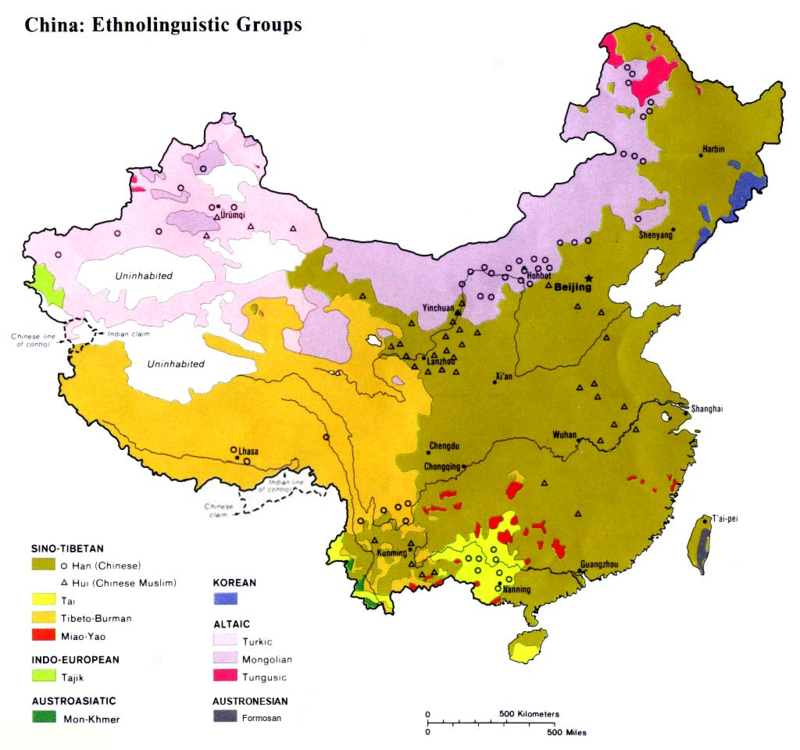 en.wikipedia.org/wiki/Xibe_languageen.wikipedia.org/wiki/Sibe_people en.wikipedia.org/wiki/Xibe_languageen.wikipedia.org/wiki/Sibe_people |
|
Deleted
Deleted Member
Posts: 0
|
Post by Deleted on Oct 25, 2018 1:45:41 GMT -5
Here's a a video concerning the reindeer herding Dukha tribe (Known as Tsaatan in Mongolian) of Mongolia. The Dukha are a Turkic speaking people related to the Tuvans in the Russian federation - they are also of Uriankhai descent; the same tribe as the legendary Sübetei Baator. They roam around the Khövsgöl lake area in the Tsagaan-Nuur county of the northern Mongolia. This is another endangered language with only 500 speakers left in Mongolia. The Dukha ride in at around the 5th minute of the video. Spirit of Asia : Tsaatan , The reindeer tribe of Mongolia 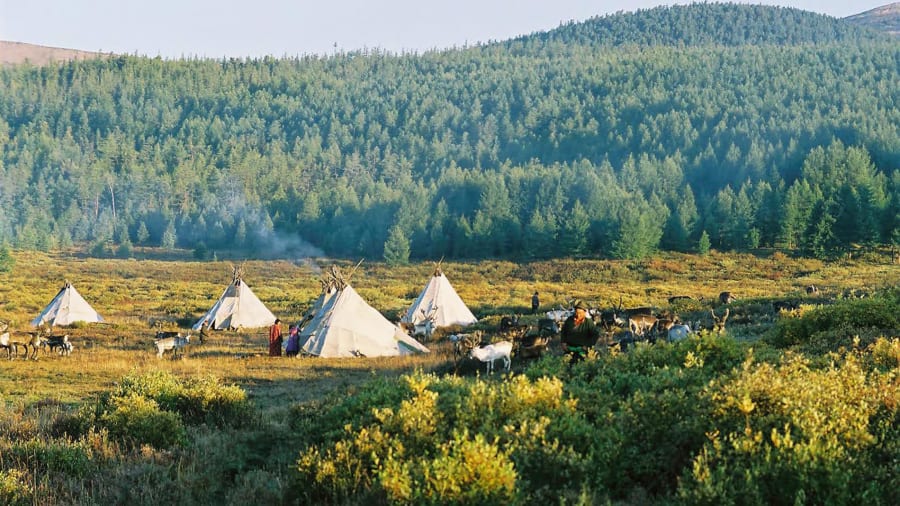 en.wikipedia.org/wiki/Dukha_people en.wikipedia.org/wiki/Dukha_people |
|
Deleted
Deleted Member
Posts: 0
|
Post by Deleted on Oct 25, 2018 13:47:13 GMT -5
Sci-Fi Short Film: Genghis Khan Conquers the Moon!Found this on youtube earlier today, kinda reminds me of a Kull yarn. Sci-Fi Short Film "Genghis Khan Conquers the Moon" - DUST presents USC Student Film WeekDescription:
"Genghis Khan Conquers the Moon" by Kerry Yang
In Genghis Khan's last days, an encounter with a Wizard sends him to the Moon.
In Genghis Khan's last days, an encounter with a Wizard sends him to the Moon. Just as the Mediaeval anti-hero thinks he's made his greatest conquest, he finds himself on a spiritual quest, realizing the absurd clash between one man's need and the silence of the Universe.
The Cast:  CARY-HIROYUKI TAGAWA as Genghis Khan  JAMES HONG as Wizard  MARCUS NATIVIDAD as General Subutai  DANIEL JUHN as Jamukha  GUY PERRY as Prince & Neil Armstrong If you wanna see some more Sci-Fi short Films, check out the DUST youtube channel. www.youtube.com/channel/UC7sDT8jZ76VLV1u__krUutA
|
|
|
|
Post by deuce on Nov 3, 2018 21:54:53 GMT -5
Cool clip. The part about "mori" and "mari" being the Mongol words for "horse" and "mare" made me perk my ears up. I immediately thought of a borrowing from Indo-European. The ancient Proto-Celtic word for horse is "markos" and of course there is "mare" in English, wich is possibly derived from a Celtic root. As I recall, Jean Manco (RIP) reported that "markos" was imported into Celtic by way of Cimmerians pushed west by the Scythians. If so, I guess it's possible that the borrowing went the other way if there even was a "borrowing" of any sort. In either case, I'd say there were proto-Turkic intermediaries involved. en.wiktionary.org/wiki/Index:Proto-Celtic/m en.wikipedia.org/wiki/Mare#Etymology |
|
Deleted
Deleted Member
Posts: 0
|
Post by Deleted on Nov 5, 2018 16:33:38 GMT -5
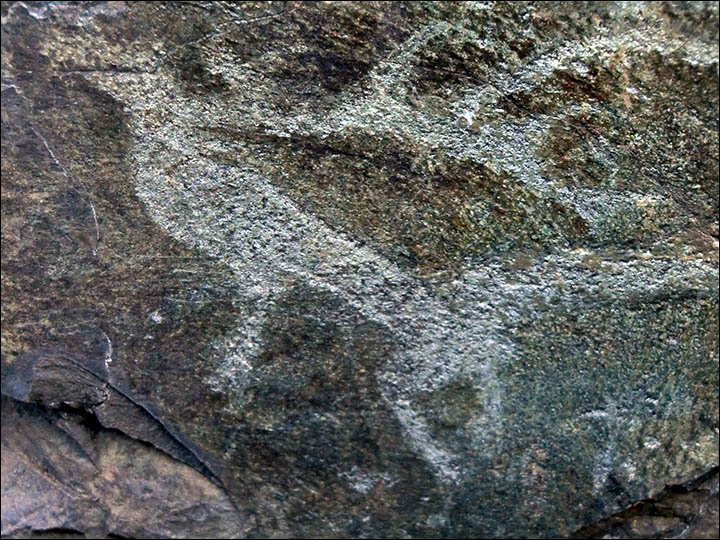 Rock art of the Altai Mountains. Rock art of the Altai Mountains.Thanks Deuce. I wonder if Mori is in anyway connected to the Turko-Mongol Maral (Deer, doe). Goa Maral (Beautiful Doe) can be found in the Secret History as the mythical ancestress of the Mongols along with Börte Chino (Blue-grey Wolf). I'm pretty certain that there's an ancient mare/deer connection in the Indic or Iranic group of Indo-European languages. Can't seem to remember where I read it unfortunately. I think there probably is an ancient connection between the Indo-European, Uralic and Altaic languages - unfortunately, there are so few extant sources in the ancient Altaic languages. Here's a couple more words found in ancient Altaic & Indo-European languages. Tümen the Turko-Mongol for 10,000 can also be found in Tokharian. Khatun (lady) I believe can be found in Tokharian documents. English: Ox Tokharian: Okso Turkic: Öküz
Mongolian: Ökher, ÖkürHungarian: Ökör
The Z has changed into the R in Mongolian demonstrating an ancient connection to the Oghuric languages of the Hunnic peoples. There are a few examples like this in the Mongolian language. So Öküz becomes Ökür, Ikiz (twin) becomes ikher in Mongolian, and as above, also in Hungarian. Thankfully, the Oghuric language of the Chuvash is still around to help us out. I can't watch the video with this new laptop, should have it sorted this weekend. |
|
Deleted
Deleted Member
Posts: 0
|
Post by Deleted on Nov 6, 2018 2:32:03 GMT -5
Looks like a fascinating exhibition in Beijing on the Mongolic Khitan, founders of the Liao Dynasty (907-1125). Qidan cultural relics exhibition opens at Capital Museum.www.chinadaily.com.cn/a/201809/13/WS5b99c267a31033b4f4655c64_1.html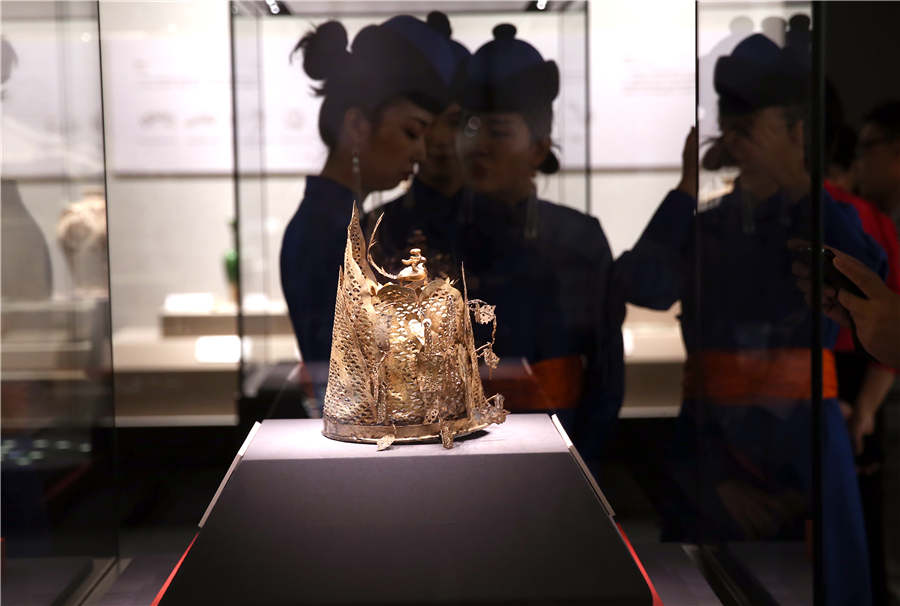 A crown is made of gold and silver. [Photo provided to chinadaily.com.cn] 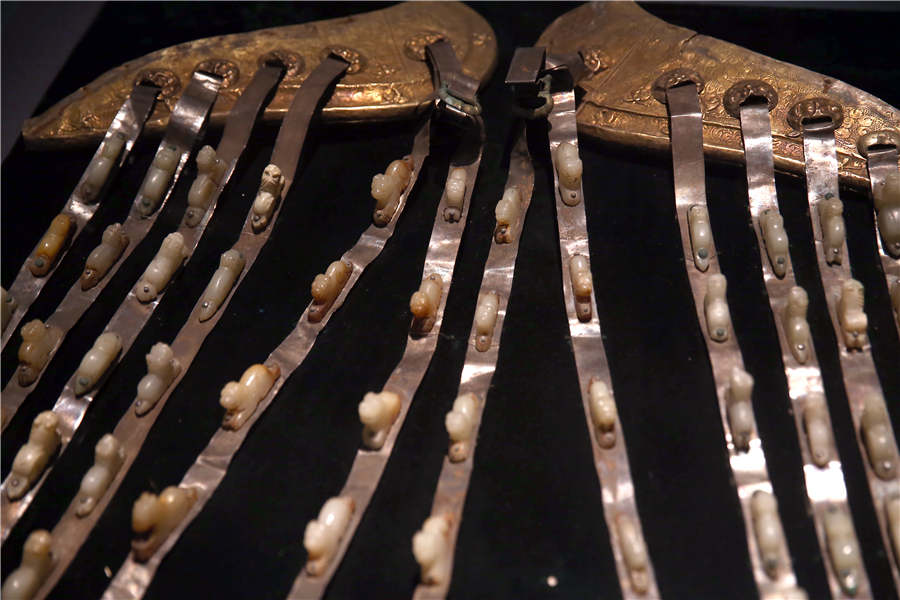 A harness for horse-riding is decorated with jade. [Photo provided to chinadaily.com.cn] 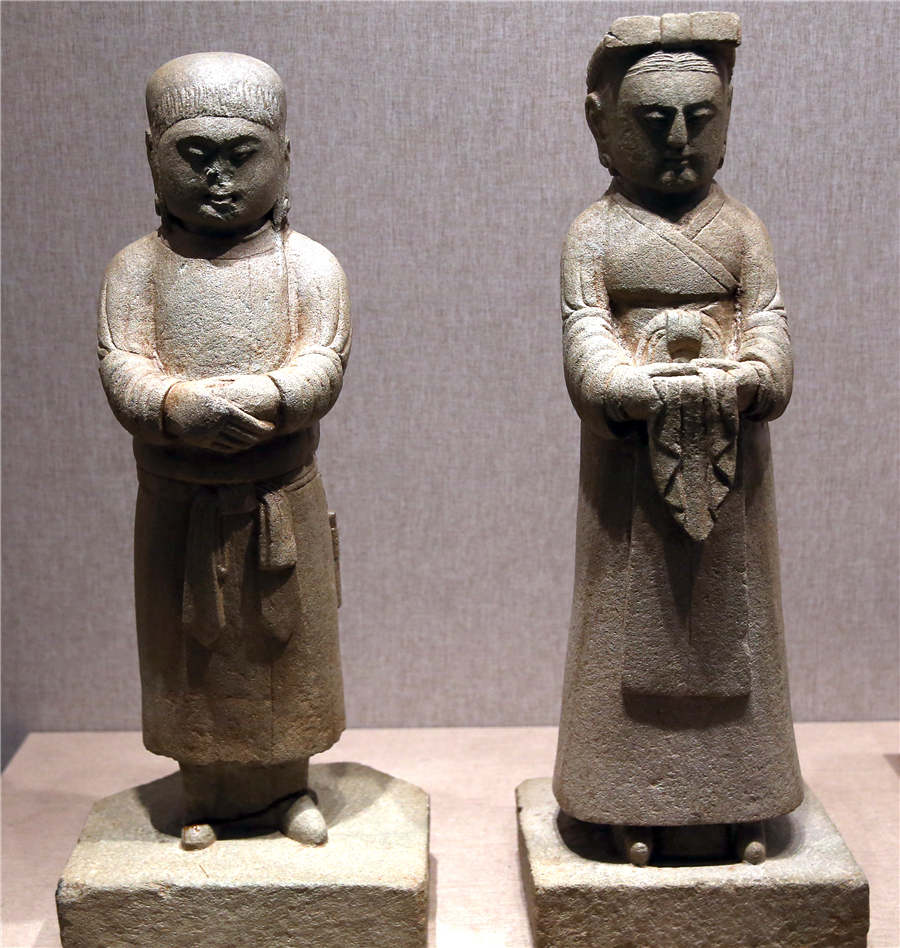 These terracotta figures show a Qidan man and woman. [Photo provided to chinadaily.com.cn] |
|
Deleted
Deleted Member
Posts: 0
|
Post by Deleted on Nov 6, 2018 2:34:38 GMT -5
Qidan cultural relics exhibition opens at Capital Museum, part 2 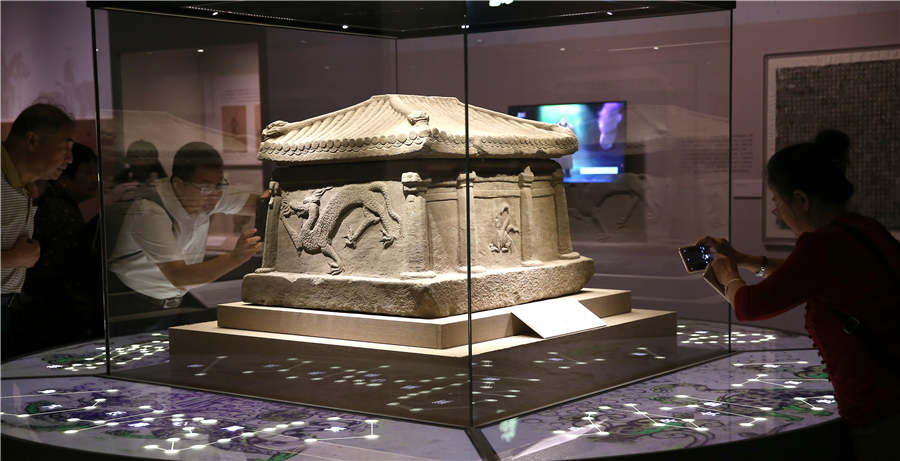 A sarcophagus is decorated with patterns. [Photo provided to chinadaily.com.cn] 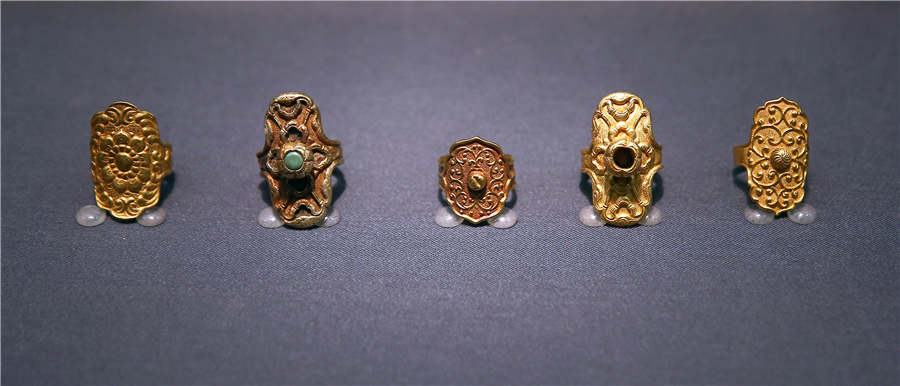 These gold rings were unearthed from the Chenguo Princess's tomb. [Photo provided to chinadaily.com.cn] |
|
|
|
Post by deuce on Nov 16, 2018 2:29:21 GMT -5
The HU is (are?) back!
|
|
Deleted
Deleted Member
Posts: 0
|
Post by Deleted on Nov 17, 2018 12:41:18 GMT -5
Great stuff, thanks Deuce.
Here's the new addition to the Hu's youtube Channel: Wolf Totem
|
|
Deleted
Deleted Member
Posts: 0
|
Post by Deleted on Nov 20, 2018 2:07:16 GMT -5
"NOMAD SOUNDS" by Yuliyana Krivoshapkina of the Sakha Republic (Yakutia) with the Khomuz & Janar Turatova from the Kırgız Republic.
|
|
Deleted
Deleted Member
Posts: 0
|
Post by Deleted on Nov 21, 2018 14:02:18 GMT -5
Deliler (Berserkers) or Mikhal Oglu Vs Vlad the Impaler Description: Description:
In the film, Romanian Prince Vlad III executes an Ottoman ambassador sent by Mehmed II between 1458 and 1460. Then, Mehmed orders Baba Sultan to kill Vlad. Baba Sultan sends Deliler, which consist of seven people, from Edirne to Targovişte in Romania: Gökkurt, Çebi, Suskun, Adsız, Mübariz, Kongar and Aşgar.
While Deliler are passing by the village of Alaca, they realize something is happening: Some of Vlad's gangs plunder the village. An ironsmith stands up to the gang and is killed; the gang surrounds his daughter Alaca, and Deliler save her. Alaca and a baby whose mother is killed join Deliler. They go to the castle of Vlad to execute him.
Here's an extended trailer: www.imdb.com/title/tt8748608/
|
|
Deleted
Deleted Member
Posts: 0
|
Post by Deleted on Nov 29, 2018 14:24:06 GMT -5
Fascinating article concerning the Sogdians during the Tang Dynasty: Love and loathing from the footnotes of history, part 1.
Words by Zhao Xu. 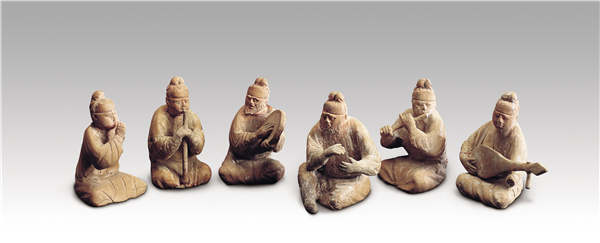 [Photo provided to China Daily] Few artifacts from the Sogdians have been found, but those that have offer insights into their role in the ancient world
"Of all the more than 60 stone tablets unearthed in Luoyang and bearing the epitaph for their Sogdian owners, only one was discovered during official excavation," says Mao Yangguang, a professor of history at Luoyang Normal University.
For the past decade Mao has been reading between those inscribed lines, hoping to garner more clues about a people who once controlled a crucial part of international trade but have become mere footnotes of history.
"The tomb raiding once rampant in this part of the country has left little for us, but this particular one, which was intact upon its excavation by archaeologists, is of special importance," Mao says.
"This is because the tomb owner, a man named An Pu, was no ordinary trader like most of his contemporary Sogdians, but a general who once fought to defend the borders of the Tang Empire (619-907)."
An Pu's grandfather, who went by the name An Xili, was the tribal leader of a small Sogdian kingdom northwest of the Chinese empire, Mao says.
"Around 630 An Pu and his father, whose name we have no way of knowing, reneged on their nomadic overlord and submitted to Tang. Appearing in the pages of history as something of a war god, An Pu proved invincible on the battleground and was made a general by the Tang court."
The Sogdian general died in 664, aged 64, and was later inhumed with his wife, who outlived him by 40 years. The burial ground was constructed by An Jinzang, An Pu's son, who, instead of leading a horseback life of his own, became a court musician.
"Between them the three generations of Sogdians witnessed the height of Tang, to which their own lives provided the most titillating annotations," Mao says.
"The love-hate relationship they had with the Chinese empire was characterized by mutual courtship and the occasional pang."
In an article written for the catalogue of a Silk Road exhibition at the Henan Provincial Museum, Sun Ji, a Chinese historian, cited a Tang Dynasty travelogue in which the Sogdians were described as "shrewd, cunning and reckless".
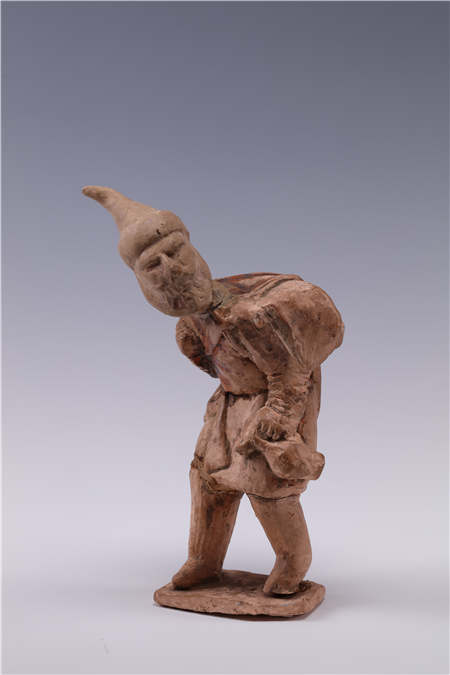 Tang Dynasty clay figurine of a Sogdian merchant, within the collection of Luoyang Museum [Photo provided to China Daily] Given that the Sogdians were first and foremost businessmen, this assessment may not be entirely groundless. However, local Chinese also found the Sogdian practice of consanguineous marriage deeply disturbing, Sun says. (It is true that until the early 20th century it was perfectly normal for a Chinese to marry his or her cousin. But if the writings between the sixth and the eighth centuries are to be believed, it was acceptable for a Sogdian to marry his blood sister or even mother.)
Adding to this were the Sogdians' unconventional funerary traditions, which involved having the remains of the dead eaten by dogs. (Similar practices can be found in what is known as the "sky burial" of the Tibetans, whereby a human corpse is placed on a mountaintop to decompose or to be eaten by scavenging animals, mostly carrion birds. But if there is any concrete connection between the two it has yet to be established.)
Consequently, although during the Tang era, especially its first half, the Sogdians had a prominent place in the life of the local Chinese, marriages between the two people were rare.
Personal sphere aside, this tinted view did little to prevent the Sogdians making inroads into almost all other aspects of Chinese society, thanks in equal part to their great adaptability and the many skills they had acquired by tradition or by learning.
One of these was what seemed to be their natural prowess in dance and music, which largely explains the popularity of Sogdian servants among the wealthy elite of Tang. (Some of them were men of magic, as a pottery figurine unearthed in Gansu province, northwestern China, clearly indicates. With both hands hidden behind his back, the man, whose high-bridged nose and thick beard revealed him as a Sogdian, was in the middle of playing finger tricks.)
Images of Sogdian musicians and dancers, rendered mostly as pottery figurines or on murals, abound in Tang Dynasty tombs, testifying to a willingness of the local Chinese to be entertained by the same people in their afterlife.
Some were also chiseled onto the gilt surface of various metal wares that bore the unmistakable influences from West Asia, influences brought by the Sogdians themselves and representing a more profound aspect of Silk Road exchanges.
In other cases the likeness of a Sogdian served unlikely functions, in a rather amusing way, for example as a pottery granary stopper or a box lid.
Rong Xinjiang, a professor of history at Peking University, says many Sogdian men served as metalsmiths in the imperial workshops of Tang. But rather sadly, very little of their craftsmanship was later passed down to their Chinese counterparts, a fact that some historians believe was partly due to Chinese society's deeply entrenched bias against artisans. They were viewed as lesser mortals compared with the literati. So there was little effort in Chinese history to record and preserve what they were doing.
Between the fourth and 10th centuries the Sogdian dominance of the Silk Road in effect turned their Eastern Iranian language into a lingua franca of Asian trade. On the other hand, their role as middlemen had given them a unique linguistic edge from a relatively young age; most Sogdian merchants were proficient in more than one tongue. |
|
Deleted
Deleted Member
Posts: 0
|
Post by Deleted on Nov 29, 2018 14:27:57 GMT -5
Love and loathing from the footnotes of history, part 2.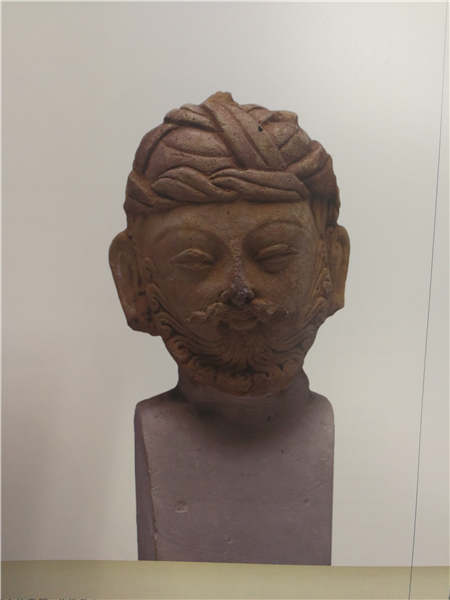 Tang Dynasty clay head sculpture of a Sogdian donor, unearthed in Xinjiang [Photo provided to China Daily] As a result, many well-educated members of the group were recruited by the Tang court as official interpreters. There were also others who converted to Buddhism and were active in translating religious scriptures.
"In retrospect, this latter engagement spared the ancient Sogdian language - at least its written form - the fate of total extinction," Rong says. "By comparing the original scripture with the Sogdian translation, historians have been able to decipher a large part of the archaic tongue."
One place where these precious documents used to be housed, Rong says, is in the Dunhuang Grottoes in northwestern China, whose 500 or so caves are treasure troves of Buddhist art. The Sogdian translations have been found in one particular cave, where the dry desert climate combined with a lack of oxygen have contributed to their remaining relatively intact.
"In fact the Sogdians played a major role in religious transmission along the Silk Road, a role often overlooked," Rong says. "They helped to bring to China the Buddhist religion, which reached its height during the Tang time, and in this process themselves converted, from their original belief of Zoroastrianism."
Archaeological discoveries provide evidence for the conversion. Unearthed in the Buddhist shrine in Xinjiang, northwestern China, is a clay head sculpture of a Sogdian gongyangren, or donor. Bearing in mind the wealth they accumulated in trade, it is not surprising that some of that wealth was offered up to temples of worship.
Another example involves a gilt bronze rendition of a Sogdian performer, leaping and twirling on top of an inverted lotus flower. The dance is purely Sogdian, but the flower, on which Avalokitasvara, or the Goddess of Mercy, is often seated, is commonly viewed as a symbol of Buddhism. (It should be noted that there were also Sogdians who took up Christianity and as the earliest Christian believers in China helped to disseminate their religious message in their adopted home.)
Changes took place not only in the religious sphere, Rong says.
"The two-way influence between the Sogdians and the local Chinese are encompassing to say the least. And there's no better place to observe this than the inside of their burial chambers.
"So far, no pre-fifth century Sogdian tombs have been discovered, for clear reasons: people at the time still preferred the aforementioned organic way of dealing with their bodies, a practice closely related to Zoroastrianism. However, stone-inscribed epitaphs for Sogdians started to appear in China around the late sixth century, a telltale sign of their gradual cultural conversion."
Mao of Luoyang Normal University says that almost all Sogdian tombs discovered in Luoyang have stone epitaphs - the wooden coffins have long rotted and been reduced to traces on the ground.
"Some epitaphs are dedicated simultaneously to the husband and wife."
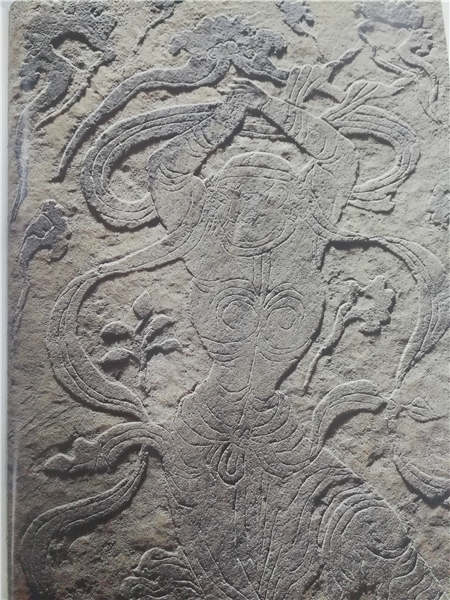 A Tang Dynasty stone tomb gate carved with images of Sogdian dancers [Photo provided to China Daily] Sogdian elements were introduced into the final resting place of their contemporary Chinese, not only in the forms of ceramic sculptures and murals.
"The Sogdians were cast not only as servants and entertainers, but also as retinues and protectors," Mao says, referring to a clay sculpture that used to guard the entrance to a Tang Dynasty tomb in Xi'an.
The tomb guards, indispensable for ancient Chinese burial grounds, usually took their images from ferocious animals, real or mythical. But this particular one has the pricked ears of a horse, the spiky wings of a unicorn, the stout legs of a lion and the fierce face of a Sogdian man.
We should not be surprised, says Sun Ji, a Chinese historian.
"Long under the rule of Xiongnu, the Sogdians themselves, although vulnerable in a way, also developed a tough side."
Needless to say, the long journey they took, often under unpredictable circumstances, also helped to inject a dose of hardiness into the Sogdian blood.
Thus came another profession of the Sogdians: to serve as mercenary soldiers among foreign troops, including that of Tang. And with deepened influence the Sogdians exerted over the Chinese empire in the seventh and eighth centuries, their presence in the Tang army took on a new dimension during the reign of Emperor Xuanzong (685-762).
"That was when, after nearly a century after the founding of Tang in 618, the fighting capacity of its troops had greatly dwindled," Sun wrote in an article. "At some point it was suggested to the emperor that the introduction of Sogdians as not only ordinary soldiers but also generals might provide a solution."
The emperor took the advice, and a couple of decades after the death of An Pu his men were enjoying a higher political profile.
Among them was An Lushan, no relation to An Pu, a Sogdian general stationed in what is today northeastern China. Having won the total trust of Emperor Xuanzong and his beloved concubine Yang Yuhuan, An Lushan, who was given more military power than any of his Sogdian predecessors, rebelled. One direct result was Xuanzong's fleeing from his royal palaces in Xi'an, palaces later sacked by the rebel troops. Another was the forced suicide of Yang during their escape, by angry soldiers who accused her of having fostered nepotism and misled the emperor.
|
|